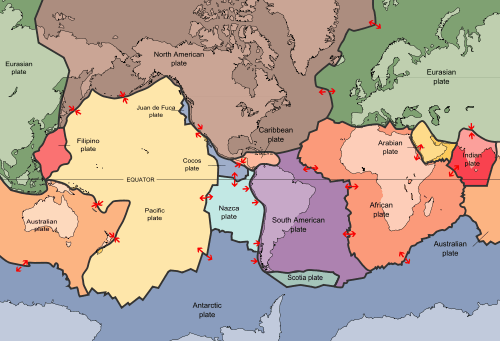South American Plate

The South American plate, shown in purple
The South American Plate (Dutch: Zuid-Amerikaanse Plaat, French: Plaque Sud-américaine, Portuguese: Placa Sul-Americana, Spanish: Placa Sudamericana) is a tectonic plate which includes the continent of South America and also a sizeable region of the Atlantic Ocean seabed extending eastward to the Mid-Atlantic Ridge.
The easterly side is a divergent boundary with the African Plate forming the southern part of the Mid-Atlantic Ridge. The southerly side is a complex boundary with the Antarctic Plate and the Scotia Plate. The westerly side is a convergent boundary with the subducting Nazca Plate. The northerly side is a boundary with the Caribbean Plate and the oceanic crust of the North American Plate. At the Chile Triple Junction in Taitato-Tres Montes Peninsula, an oceanic ridge — the Chile Rise — is subducting under the South American plate.
The South American Plate is in motion, moving westward away from the Mid-Atlantic Ridge. The eastward-moving and more dense Nazca Plate is subducting under the western edge of the South American Plate along the Pacific coast of the continent at a rate of 77 mm per year.[1] This collision of plates is responsible for lifting the massive Andes Mountains and causing the volcanoes which are strewn throughout them.
References
|
|---|
| | Major | | |
|---|
| | Minor | |
|---|
| | Other | |
|---|
| | Historical | |
|---|
| |
|

